| LabGuy's World: 1970 Shibaden
SV-550 EIAJ Record Only Portapack VTR
New Addition 03.06.16 
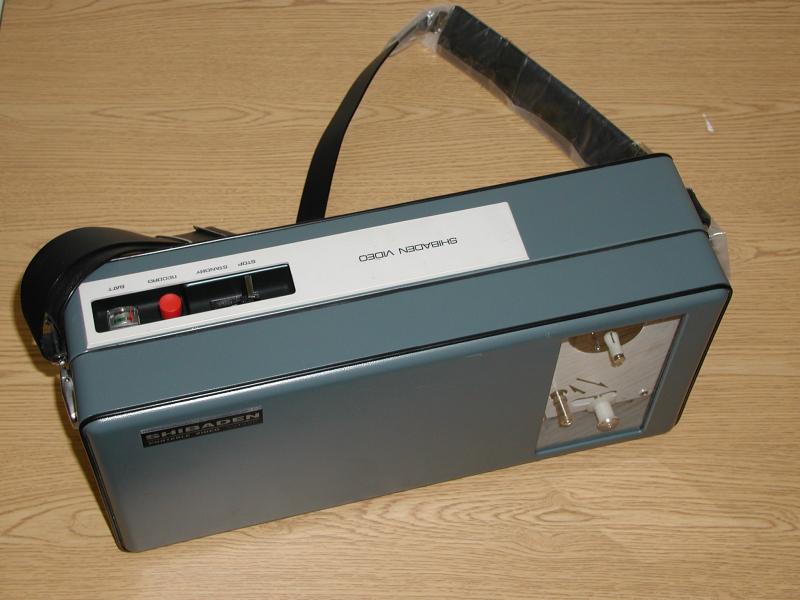 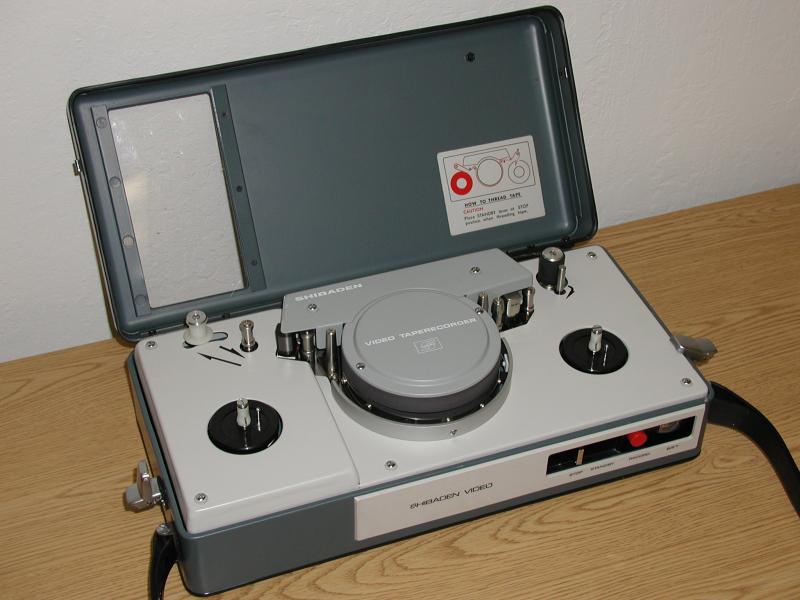 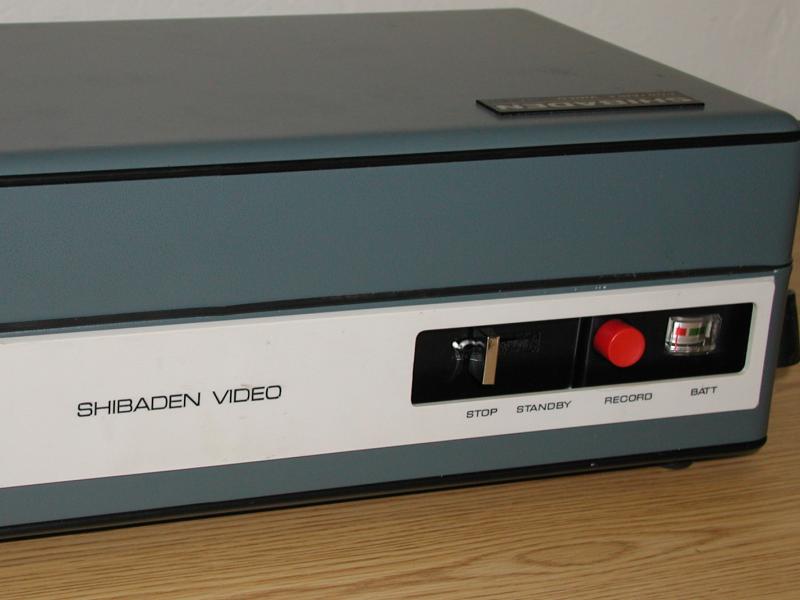
1970 Shibaden SV-550 EIAJ Record Only Portapack VTR Here is one I never heard of before! I did have photos of it, erroneously listed as an SV-707. A closer look at the SV-550 can reveal some significant differences. The most obvious visual differences are the diameter of the head drum and the "pitch" of the reels. On the SV-707, the feed reel (on the left side of the second photo) is lower than the take up reel and the tape "rises" as it travels about the head drum. On the SV-550, the feed reel is higher than the take up reel and the tape travels down and around the head drum. In the original "true" Shibaden format, the head drum has a noticeably larger diameter. For the EIAJ version, the drum is closer to five inches in diameter. This product was transitioned from its original format to the standardized EIAJ format, probably in or around 1969-70. Panasonic did a similar thing with its NV-8080 / NV-3080 record only portapack, shown later on this page. [CLICK HERE] to read the owner's manual for the SV-707. This is apparently a later "standardized" model based upon the SV-707. Functionally, the two VTRs are identical, except for the format. This unit is in extreme "like new" condition. The capstan belt has rotted out, or I would have loaded tape and taken it for a spin. The mating camera for this VTR is the Shibaden FP-707. The operation of this VTR could not be simpler. Place the function lever in stand-by, frame up the scene in the camera, pull the trigger and begin recording. When done, toss the tape on any EIAJ standard VTR and enjoy!  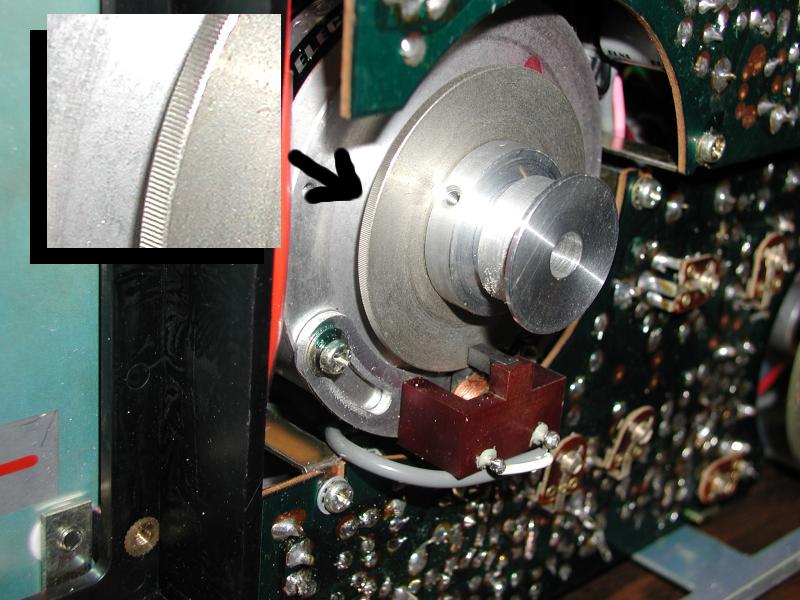 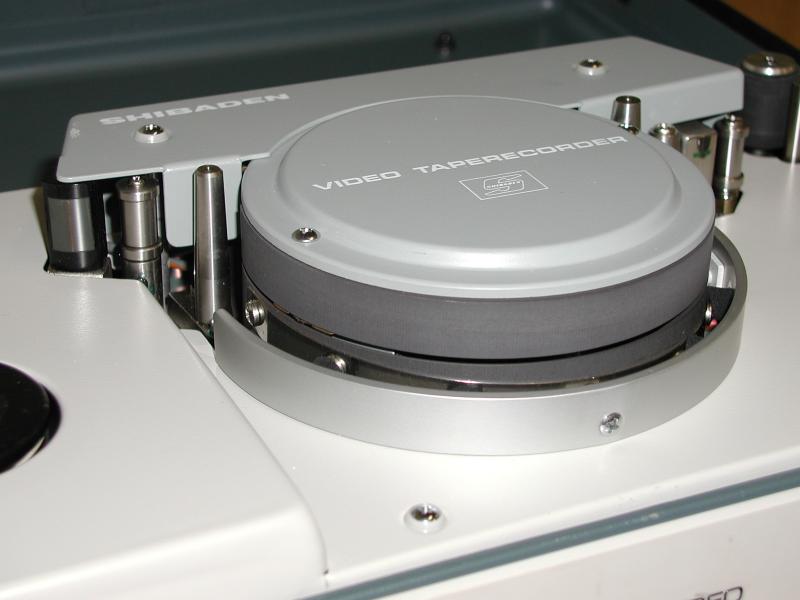
The Shibaden SV-550 head drum and mechanical sync generator There is a very clever mechanism built into almost all of these early B/W portapacks. First some background. If a VTR is moved suddenly, like when it is being carried about, the rotary head experiences the same forces as a gyroscope. The head will slow down or speed up depending on the direction of the motion. This is called gyro error. On playback, the picture on the monitor may actually shift left and right and, in extreme cases, it may lose horizontal sync altogether! If you could see the video pattern on the tape, you would see the space between the horizontal sync pulses varying as well as the length of the recorded video tracks. The solution is to create sync directly from the head wheel and capstan, errors and all, and drive the camera with it. This is called a Mechanical Sync Generator. Today, one of the reasons video recorders use very small diameter head drums is because it takes far less servo power to control it. A smaller mass responds to velocity changes faster too. The older machines need the larger heads to get the desired writing speed. There large mass made them slow to lock up and they consumed large amounts of precious battery power. I know this sounds crude, but ultra high power motor drive amplifiers, VLSI sync generator ICs, high density metal powder tape and one chip TBCs had not yet been developed. It's barely 1970! See the second photo. This is the bottom of the head drum with the capstan belt removed for clarity. A small metal wheel is attached to the shaft of the head drum. This wheel has 525* grooves machined in the edge of it, like a gear. These teeth pass near an electromagnet and induce a signal in it. This signal is amplified and shaped into horizontal sync pulse. On top of the drum, and not shown, are two other electromagnets which work in similar way to produce vertical sync pulses. These sync pulses drive the camera. The capstan flywheel is also driven by the head drum motor. This way, head rotation and tape motion are mechanically synchronized and track together. When the head speeds up, so does horizontal sync and so does the tape speed. If the head slows down, so does the horizontal sync and tape speed. Because everything is physically connected together, the interrelationship of all pulses is fixed. As the had revolves 30 times a second and the wheel has 525 teeth, the system produces 30 x 525 = 15,750 pulse per second that varies precisely with the gyro errors of real world recording! The camera scanning tracks right along. No matter what the instantaneous head speed, the pattern printed to tape now has perfectly spaced sync pulses! A playback VTR shows no evidence of the gyro errors present during the recording. Now, that's what LabGuy calls a real innovation! Even if it only works for B/W. TANSTAAFL - "There Ain't No Such Thing As A Free Lunch", said the wise man. Have you asked the next logical question? Where did the gyro error go? It ends up in the sound track. Recall that the capstan tracks the head speed, which was varying. Overall, the gyro error is a only a very small fraction of the total head and tape speed. In video, even this small amount of gyro error is intolerable. In audio, the gyro error appears as tape speed error. This is called "wow". At 2% or less the total value of wow is low enough to be unnoticeable except to the sharpest ear. It is most noticeable when the VTR operator turns to follow fast action. You hear the audio pitch bend up or down. . * 625 for CCIR . NEEDED: Service manual for the SV-550. [HOME]......[VIDEO RECORDERS MUSEUM] Last updated: March 25, 2007 |